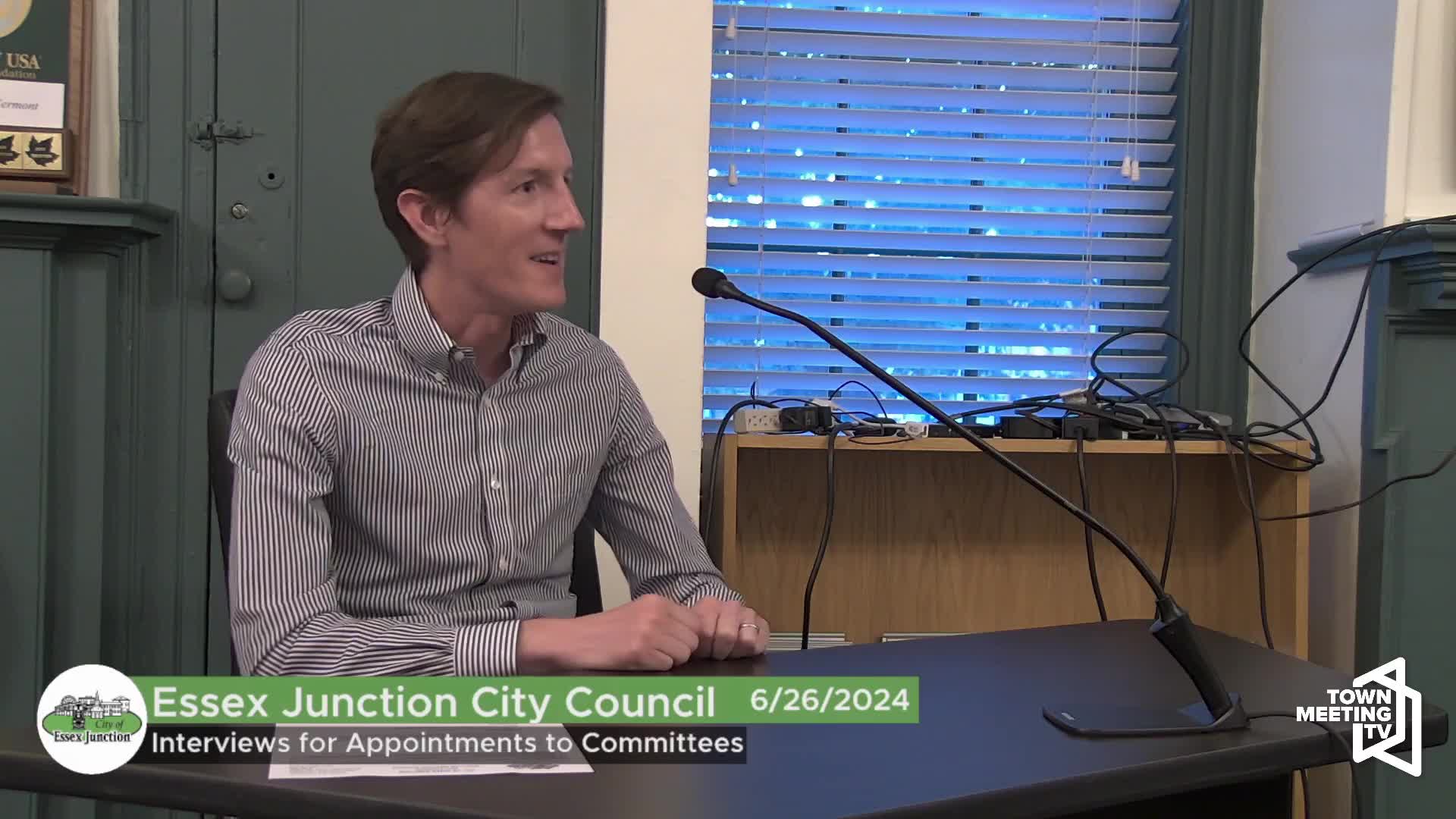Community leader tackles housing crisis and gentrification challenges
June 24, 2024 | Essex Junction City, Chittenden County, Vermont

This article was created by AI summarizing key points discussed. AI makes mistakes, so for full details and context, please refer to the video of the full meeting. Please report any errors so we can fix them. Report an error »

In a recent government meeting, discussions centered around urban planning and community development, particularly in the context of climate change and population growth. A new resident of Essex Junction, Vermont, shared insights from their experience in Cincinnati, highlighting the importance of clean air, water, and manageable speed limits, which drew them to the area.
The resident, who has a background in community council leadership, expressed enthusiasm for contributing to Essex Junction's future through the planning commission. They emphasized the need for strategic planning to navigate the challenges of rapid growth, as evidenced by their previous neighborhood's transformation from a struggling Rust Belt area to a burgeoning community that saw a 50% increase in population over a decade.
Concerns were raised about the implications of this growth, particularly regarding housing affordability. The resident noted that as their former neighborhood became more desirable, rental prices surged, creating a significant wealth gap between new arrivals and long-standing residents. This situation raised questions about the sustainability of such growth and the potential for gentrification, as long-time residents grappled with rising costs.
The meeting underscored the necessity for thoughtful planning to ensure that Essex Junction can accommodate new residents while preserving its unique community identity and affordability for all. The discussions highlighted the delicate balance between development and maintaining the character of neighborhoods in the face of changing demographics and economic pressures.
The resident, who has a background in community council leadership, expressed enthusiasm for contributing to Essex Junction's future through the planning commission. They emphasized the need for strategic planning to navigate the challenges of rapid growth, as evidenced by their previous neighborhood's transformation from a struggling Rust Belt area to a burgeoning community that saw a 50% increase in population over a decade.
Concerns were raised about the implications of this growth, particularly regarding housing affordability. The resident noted that as their former neighborhood became more desirable, rental prices surged, creating a significant wealth gap between new arrivals and long-standing residents. This situation raised questions about the sustainability of such growth and the potential for gentrification, as long-time residents grappled with rising costs.
The meeting underscored the necessity for thoughtful planning to ensure that Essex Junction can accommodate new residents while preserving its unique community identity and affordability for all. The discussions highlighted the delicate balance between development and maintaining the character of neighborhoods in the face of changing demographics and economic pressures.
View full meeting
This article is based on a recent meeting—watch the full video and explore the complete transcript for deeper insights into the discussion.
View full meeting